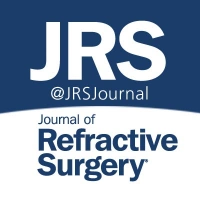publications
Nature Eye
Clinical outcomes with a new diffractive multifocal intraocular lens optimized by the dynamic light utilization algorithm
Jorge L. Alió et al.
This study assessed the refractive outcomes, optical performance, and quality of vision in patients implanted with the Intensity Hanita diffractive intraocular lens (IOL). The prospective, observational study included 64 eyes that underwent bilateral cataract surgery with Intensity IOL implantation, with evaluations conducted at 6 months post-surgery. Results indicated that 66% of eyes achieved uncorrected distance visual acuity (UDVA) of 0.10 logMAR or better. The defocus curve showed optimal vision at distance (0.02 ± 0.07 logMAR at 0.0 D) with stable performance through intermediate and near vision ranges (0.11 ± 0.08 logMAR at -1.5 D, 0.12 ± 0.12 logMAR at -2.5 D). Contrast sensitivity remained stable (p ≥ 0.06), and high-order aberrations were low, with a Strehl ratio of 0.12 ± 0.04. Mild halos and glare were reported but did not interfere significantly with daily activities, and the near activity visual questionnaire (NAVQ) indicated high patient satisfaction with near-vision tasks. These findings support the Intensity Hanita IOL’s effectiveness in providing clear vision across all distances through a five-foci distribution design that enhances depth of focus.
BMC Ophthalmology
Clinical results with a multifocal intraocular lens with a novel optical design
Gustavo Goldman
This study examined the optical performance and safety of a newly designed multifocal intraocular lens (IOL) with five focal points (two additional "intensifiers") for cataract and presbyopia management. Conducted in Buenos Aires and Ramos Mejia, Argentina, the prospective, non-randomized observational study included 31 patients (61 eyes) who received bilateral implantation between March 2020 and November 2021. At the 3-month follow-up, all eyes achieved an uncorrected distance visual acuity (UCDVA) of at least 0.15 logMAR, with 93% achieving 0.1 logMAR and 44% achieving 0.0 logMAR. For intermediate vision at 80 cm, 98% of eyes achieved at least 0.1 logMAR, and 79% reached 0.0 logMAR. The results highlight the new multifocal IOL’s efficacy, particularly for intermediate and near vision, with high rates of spectacle independence and patient satisfaction.
HIGHLIGHTS OF OPHTHALMOLOGY
Short-Term Visual Outcomes After Bilateral Pentafocal Intraocular Lens Implantation. A Pilot Study
Kepa Balparda, MSc PhD et al.
This study aimed to assess the short-term refractive and visual outcomes following the implantation of the Hanita Intensity SL pentafocal intraocular lens (IOL) in patients with presbyopia. In a retrospective observational review, 20 eyes from 10 patients (70% female) who underwent immediate sequential bilateral surgery were evaluated over three months. Results showed that 100% of patients achieved visual acuity of 20/25 or better for both near and far distances, and 20/40 or better for intermediate distances. The defocus curve indicated excellent visual performance from infinity to approximately 33 cm, allowing functional vision at all distances. Additionally, all patients reported complete independence from glasses. These findings suggest that the Hanita Intensity SL IOL is a safe and effective option for achieving spectacle independence in presbyopic patients.

JRS, Journal of Refractive Surgery
Comparison of Objective and Subjective Visual Outcomes Between Pentafocal and Trifocal Diffractive Intraocular Lenses
Dr. Bellucci et al.
A clinical study comparing the new Intensity pentafocal IOL and a trifocal IOL showed that the Intensity IOL provides superior intermediate vision and a flatter defocus curve, with comparable distance and near vision. Patients reported fewer optical disturbances, such as glare and halos, with the Intensity IOL. Further research will clarify the specific benefits of the pentafocal design.
Journal of Current Ophthalmology
Corneal Endothelial Health after Phacoemulsification Cataract Surgery without Viscoelastic Substance
German R Bianchi, MD
A study of 1,324 eyes undergoing cataract surgery without viscoelastic substance (VS) showed a 9.4% decrease in endothelial cell density (ECD) and a 1.2% increase in central corneal thickness (CCT) one year after surgery. The majority of changes occurred within the first six months, and no significant complications were reported. The results suggest that phacoemulsification cataract surgery can be safely performed without VS, with minimal impact on corneal health.
Medical Hypothesis, Discovery & Innovation Ophthalmology Journal
Spectacle Independence After Cataract Surgery: A Prospective Study With a Multifocal Intraocular Lens
German R Bianchi, MD
A study of 240 patients who received the FullRange multifocal IOL showed excellent visual outcomes, with 98.3% achieving 20/20 to 20/25 distance vision and 92% reporting spectacle independence one year after cataract surgery. Refractive accuracy was high, with 82.9% of eyes within ±0.5 D of target refraction. Patient satisfaction was notable, with strong near and intermediate visual performance and no reported complications. Future studies with longer follow-up will help further confirm these results.